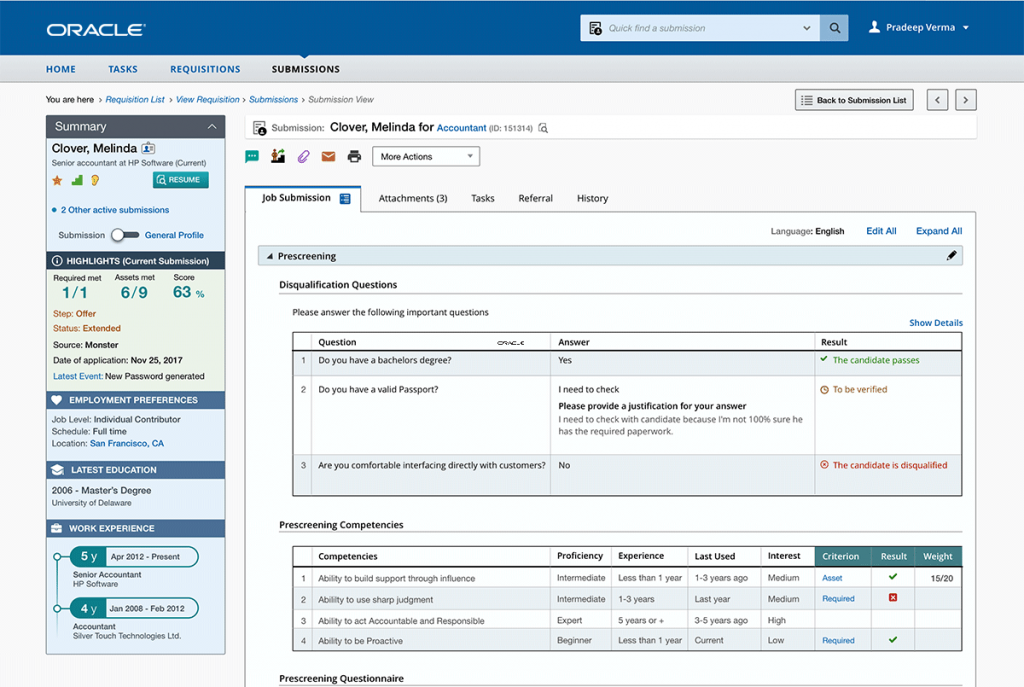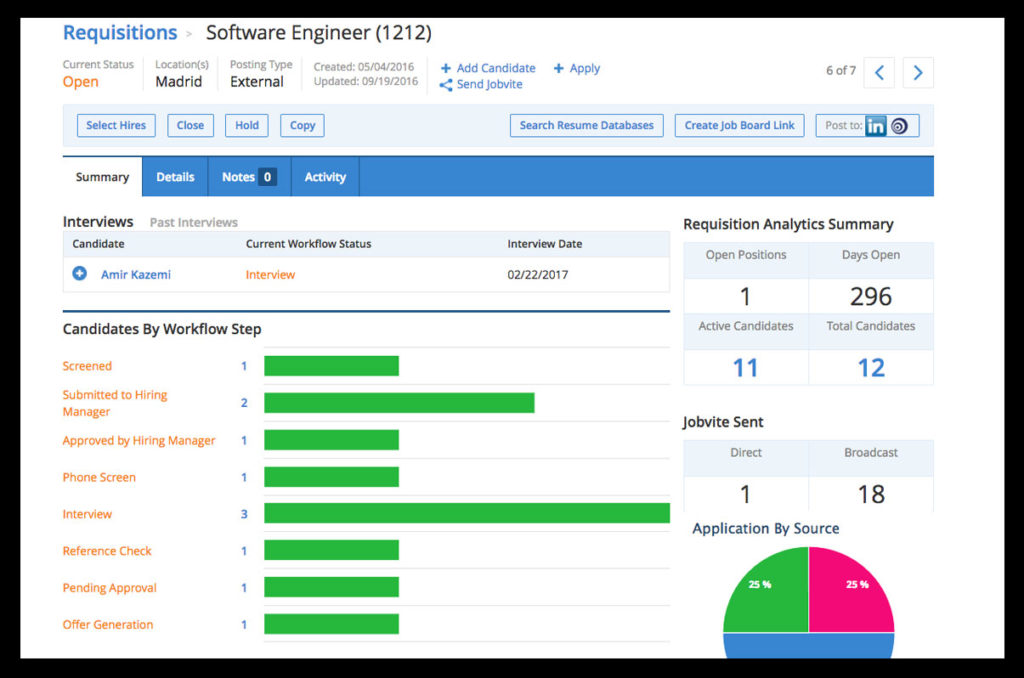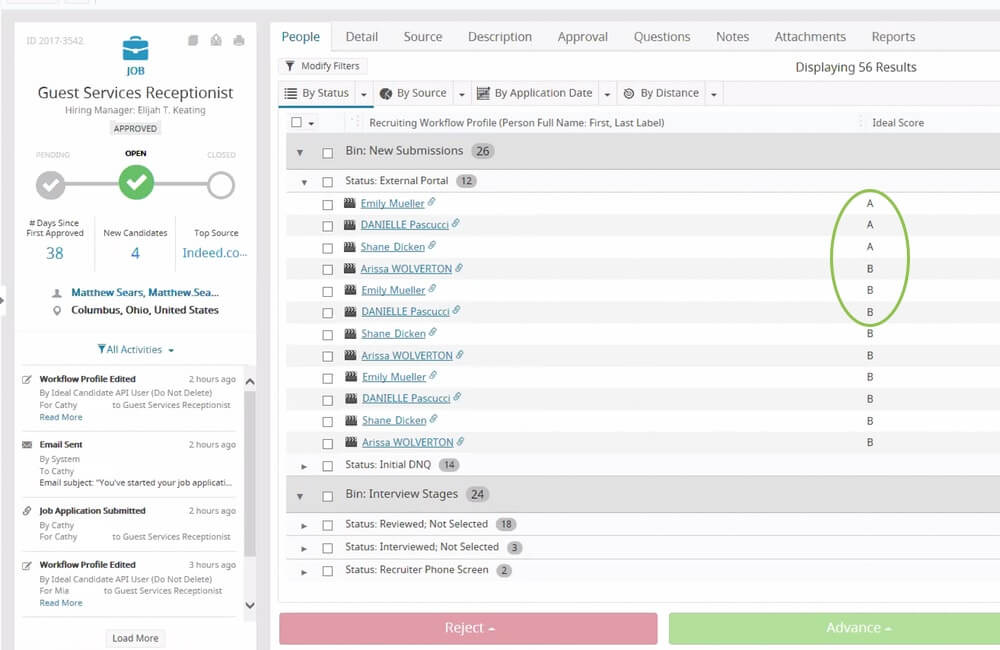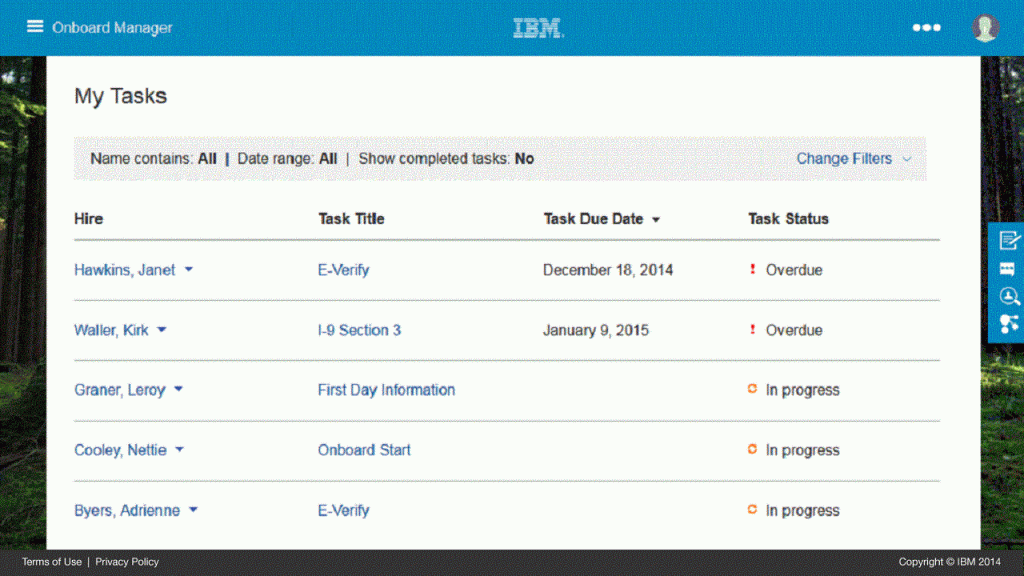There were times when a single communications app was all you needed to run a successful business. Things have changed drastically with the turn of the Millenium. People got more tech-savvy, more demanding. So, the need to keep up with them became the number one priority for most companies.
To do so, business owners have to carefully pick their staff to meet very specific demands. But how can you achieve something like this without spending a small fortune? The answer is quite simple, with the use of a dedicated resume tracking system. What’s an applicant tracking system? Well, this is what we will cover today, so let’s get started!
What’s An Applicant Tracking System?
Let’s start our article with a definition of the Applicant Tracking System or ATS for short.
To get a better understanding as to how such a tool operates, let’s imagine that you need a Senior Java Software Developer. Instead of scrolling and reading hundreds of thousands of resumes manually, the tool does it for you. However, this is only the basic principle as these so-called ATS tools are much more than that.
With them, you can narrow down the criteria you’d like your potential candidates to have. Say, if you need specialists that have at the very least 5 years of experience but no more than 100 resumes at the result, the tool will scan the incoming applications and limit the result page to just top 100 people (more on how that’s achieved we’ll discuss in a bit).
Why Do Companies Use It?
1. The very first reason why companies use ATS is that it helps save time and speed up the hiring process. Companies like Coca-Cola, IBM, and Hilton Hotels employ such a system. And, judging by the activities these companies do it is clear that these tools work in just about any industry.
2. The second reason why companies use ATS is that it helps them to save a lot of HR time. The less your staff spends searching in a sea of resumes, the more time they spend interviewing your potential hire. In other words, all ATS tools remove the “quantitative” aspect of the head-hunting process.
3. Last but not least, most companies enjoy Applicant Tracking System is that they can work 24/7 non-stop. This is especially relevant to companies that need a lot of man-power to secure a well-paid contract. This is a very powerful aspect of the system. Thus, this is the reason why so many companies are capable of, seemingly instant expansions.
How Does the System Work?
So now that we know what is an Applicant Tracking System and why companies love it so much, it is time we take a look at how they work.
So, virtually all Applicant Tracking Systems work with some text scanning system in place. When an incoming resume lands in your email box, an ATS tool will open it up, scan the contents for keywords, align the written information with your expectations and requirements, and only if the result is positive, you will see it in your “compatible” folder.
Now some of you might be asking how does the system know that a resume is “compatible” or not. Good question and we have a good answer. You see, most ATS tools were designed with the help of a bunch of top-tier recruiting experts. Now what these experts do is study the field, study the resume market and devise a flexible ranking system that has a ton of different variables.
You can add as many said variables as you like. Again, if you need a software developer or a retail worker or a bus driver with no bad habits and 10 years of experience, the system will do it’s best to find it. Now some of you might reason:
And we are glad that you asked. The system will ask your candidate to answer these questions in the online recruitment form. If they refuse to do so, they will risk losing a position as the tool will deem the resume as least compatible. Also, the person submitting the resume will get a notification upfront as to how resumes are graded. In other words, this isn’t something hidden or for “advanced” applicants.
Limitations
The Application Tracking industry is growing which means introducing new tools all the time. However, despite the growing popularity of said tools, there are few limitations and drawbacks. More specifically, practically all ATS systems are susceptible to cheaters, in other words, they cannot verify whether the person is lying or not.
To combat this, your recruitment department must manually review and adjust the search requirements all the time. If you scheduled a search and ended up with a ton of “perfect" resumes, chances are some of them are fake or don’t really stack up with reality. Your recruiters need to fine-tune the system and not rely heavily on the ranking system as it is not perfect.
5 Good Applicant Tracking Apps
Now that we know what is an applicant tracking system, let’s briefly discuss five of the most popular ATS systems. Now we won’t be judging them or reviewing them but rather take into account how they innovate and what are their user-base. So, in no particular order, here are five good Applicant Tracking Apps.
Taleo — Viewed by many as the system to use for headhunting, Taleo has established itself as a powerful ATS tool by having one of the most robust tracking algorithms. Ever since its introduction in the 1990s, the system managed to win some big-name customers, including Tesla, Johnson & Johnson, and Nike to name a few. As of right now, the tool has the majority of market share.

Jobvite — While not as popular as Taleo, Jobvite is a robust ATS tool that is often praised by its inclusion of properly mobile-optimized job postings. Another benefit of the system is that it can connect to just about any HR system in just a few clicks. Today, many powerful companies use the tool, including LinkedIn, Blizzard Entertainment, Universal Music Group, and Kaltire.

Greenhouse — Considered as Taleo’s biggest competitor, Greenhouse is a juggernaut of a recruitment system. It has practically every major feature and costs less to use than Taleo comparatively speaking. Today, the tool is used by HubSpot, Pinterest, Squarespace, among others.

iCIMS — Another powerful tool that has been on the market since the late 90s early 2000 is iCIMS. It has helped shape the ATS industry as we see it today and enjoys a hefty 7,4% market share. The tool is full with a lot of flexible systems, meaning you can adjust the ATS in a variety of ways. It is used by Uber, Amazon, Samsung, and many more.

Brassring — The last on our list which is also a powerful recruiting system that is a product of an even more impressive company, IBM. What separates Brassring is that the tool focuses on both internal and external functionality alike. From approvals to publishing options to re-routing, you have practically everything you might ever need. According to ARTW, currently, the tool is used by Royal Dutch Shell, AECOM, and CVS Health Corporation.

Bottom Line
So, that's what wraps things up for today. Applicant Tracking Systems are everywhere nowadays. They are here to stay and they will continue to get better as more and more companies are beginning to leverage the benefits these systems bring to the table. Thus if your company is in desperate need of talent, employing an ATS tool is a must but that all for now. Be sure to come back to learn more about AT technology and everything that surrounds it.
Migrate to a new ATS at any time!
Move all your data automatically.


